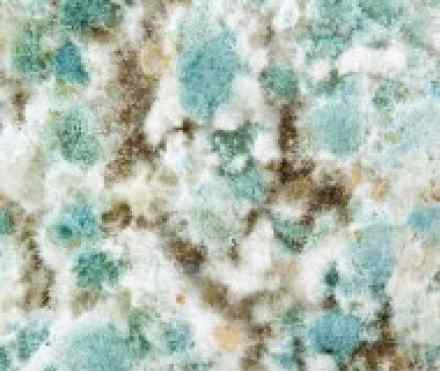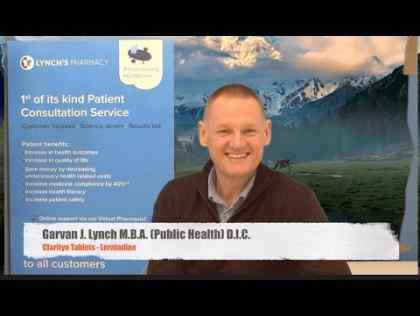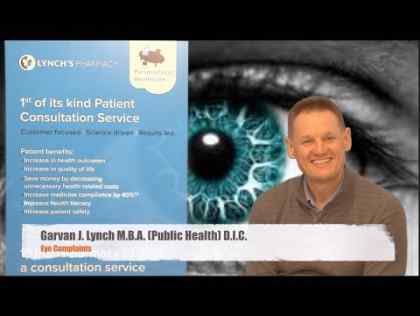
What is it?
If you have a respiratory mould allergy, your immune system overreacts when you breathe in mould spores. This reaction triggers a cascade of reactions that lead to allergy symptoms. Like other respiratory allergies, mold allergy can make you cough, make your eyes itch and cause other symptoms that make you miserable. In some people, mold allergy is linked to asthma and exposure causes restricted breathing and other airway symptoms.
If you have a mold allergy, the best defense is to reduce your exposure to the types of mold that cause your reaction. While it isn't always possible to avoid mold allergy triggers, medications can help keep mold allergy reactions under control.
Symptoms
Mould allergy causes the same signs and symptoms that occur in other types of upper respiratory allergies. Mould allergy symptoms can include:
- Sneezing
- Runny or stuffy nose
- Cough and postnasal drip
- Itchy eyes, nose and throat
- Watery eyes
- Sinusitis, an inflammation of the sinuses
Mould allergy symptoms vary from person to person, and range from mild to severe. You may have year-round symptoms or symptoms that flare up only during certain times of the year. You may notice symptoms when the weather is damp, or you're in indoor or outdoor spaces that have high concentrations of mould.
If you have a mould allergy and asthma, your asthma symptoms may be triggered by exposure to mold spores. In some people, exposure to certain moulds can cause a severe asthma attack. Signs and symptoms of asthma include:
- Coughing
- Wheezing
- Shortness of breath
Causes
Like any allergy, mould allergy symptoms are triggered by an overly sensitive immune system response. When you inhale tiny, airborne mould spores, your body recognizes them as foreign invaders and develops allergy-causing antibodies to fight them.
After the exposure has passed, you still produce antibodies that "remember" this invader, so that any later contact with the mold causes your immune system to react. This reaction triggers the release of substances such as histamine, which cause itchy, watery eyes, runny nose, sneezing and other mold allergy symptoms.
Moulds are very common both inside and outside. There are many different types, but only certain kinds of mould cause allergies. Being allergic to one type of mould doesn't necessarily mean you'll be allergic to another. Some of the most common moulds that cause allergies include alternaria, aspergillus, cladosporium and penicillium.
Risk factors
You may be more likely to develop a mold allergy if you have a family history of allergies.
If you are allergic to moulds, your symptoms may be worse if you:
- Work in an occupation that exposes you to mold. Occupations where mould exposure may be high include farming, dairy work, logging, baking, millwork, carpentry, greenhouse work, winemaking and furniture repair.
- Live in a house with high humidity. If your indoor humidity is higher than 50 percent, you may have increased exposure to mould in your home. Mould can grow virtually anywhere if the conditions are right — in basements, behind walls in framing, on soap-coated grout and other damp surfaces, in carpet pad and in the carpet itself. Exposure to high levels of household mold may trigger mould allergy symptoms.
- Work or live in a building that's been exposed to excess moisture. Leaky pipes, water seepage during rainstorms, flood damage: At some point, nearly every building has some kind of excessive moisture. This moisture can allow mold to flourish, along with other common allergens, including dust mites and cockroaches.
- Live in a house with poor ventilation. Tight window and door seals may trap moisture indoors and prevent proper ventilation, creating ideal conditions for mold growth. Damp areas, such as bathrooms, kitchens and basements, are most vulnerable.
Complications
Most allergic responses to mold involve hay fever-type symptoms that can make you miserable, but aren't serious. However, certain allergic conditions caused by mold are more severe. These include:
- Mold induced asthma. In people allergic to mold, breathing in spores can trigger an asthma flare-up. If you have a mold allergy and asthma, be sure you have an emergency plan in place in case of a severe asthma attack.
- Allergic fungal sinusitis. This occurs when fungus lodges and grows in the sinuses. Surgery may be necessary to remove a tightly packed infection ("fungal ball").
- Allergic bronchopulmonary aspergillosis. This fungal infection of the lungs can occur in people with asthma or cystic fibrosis.
- Hypersensitivity pneumonitis. This rare condition occurs when exposure to airborne particles such as mold spores cause the lungs to become inflamed. It's often triggered by exposure to allergy-causing dust at work.
Other problems caused by mold
Recent news coverage has focused on the possibility that certain moulds (such as so-called "black mould") may cause a host of symptoms such as fatigue, headache, nausea, fever, rashes and coughing — and even a condition that causes bleeding lungs in infants (acute idiopathic pulmonary haemorrhage). While some molds contain toxins that are poisonous when eaten, more research is needed to determine whether moulds inside buildings release airborne toxins that cause problems in otherwise healthy people.
While it isn't clear mould is the culprit, it is clear that living or working in a damp building can cause respiratory symptoms including nasal congestion, sneezing, runny nose, throat irritation and cough. While there's some speculation that certain molds may cause these and other ill effects, it could be something else. Damp buildings are prime environments for other health hazards, including harmful bacteria, rodents, and the irritating chemicals released from building materials and furnishings.
Exposure to high levels of mould can cause nonallergic complications in people who have weakened immune systems. If you're healthy, you can handle mould exposure, but if you're on chemotherapy or immune-suppressing drugs, you may be at risk of a mold infection.
Diagnosis
Your doctor will want to know your signs and symptoms and may want to conduct a physical examination to identify or exclude other medical problems. Your doctor may also recommend one or more skin or blood tests to see if you have an allergy that can be identified. These include:
- Skin prick test. This test uses diluted amounts of common or suspected allergens, such as molds found in the local area. During the test, these substances are applied to the skin in your arm or back with tiny punctures. If you're allergic, you develop a raised bump (hive) at the test location on your skin. Allergy specialists usually are best equipped to perform allergy skin tests.
- Blood test. A blood test (sometimes called the radioallergosorbent test, or RAST) can measure your immune system's response to mold by measuring the amount of certain antibodies in your bloodstream, known as immunoglobulin E (IgE) antibodies. A blood sample is sent to a medical laboratory, where it can be tested for evidence of sensitivity to specific types of mould.
References
https://www.allergyuk.org/avoiding-respiratory-allergens/mould-allergy-advice
http://acaai.org/allergies/types/mold-allergy
http://www.aaaai.org/conditions-and-treatments/allergies/mold-allergy
http://www.mayoclinic.org/diseases-conditions/mold-allergy/symptoms-causes/dxc-20200846
http://www.healthline.com/health/allergies/mold-allergy-symptoms



